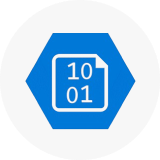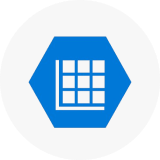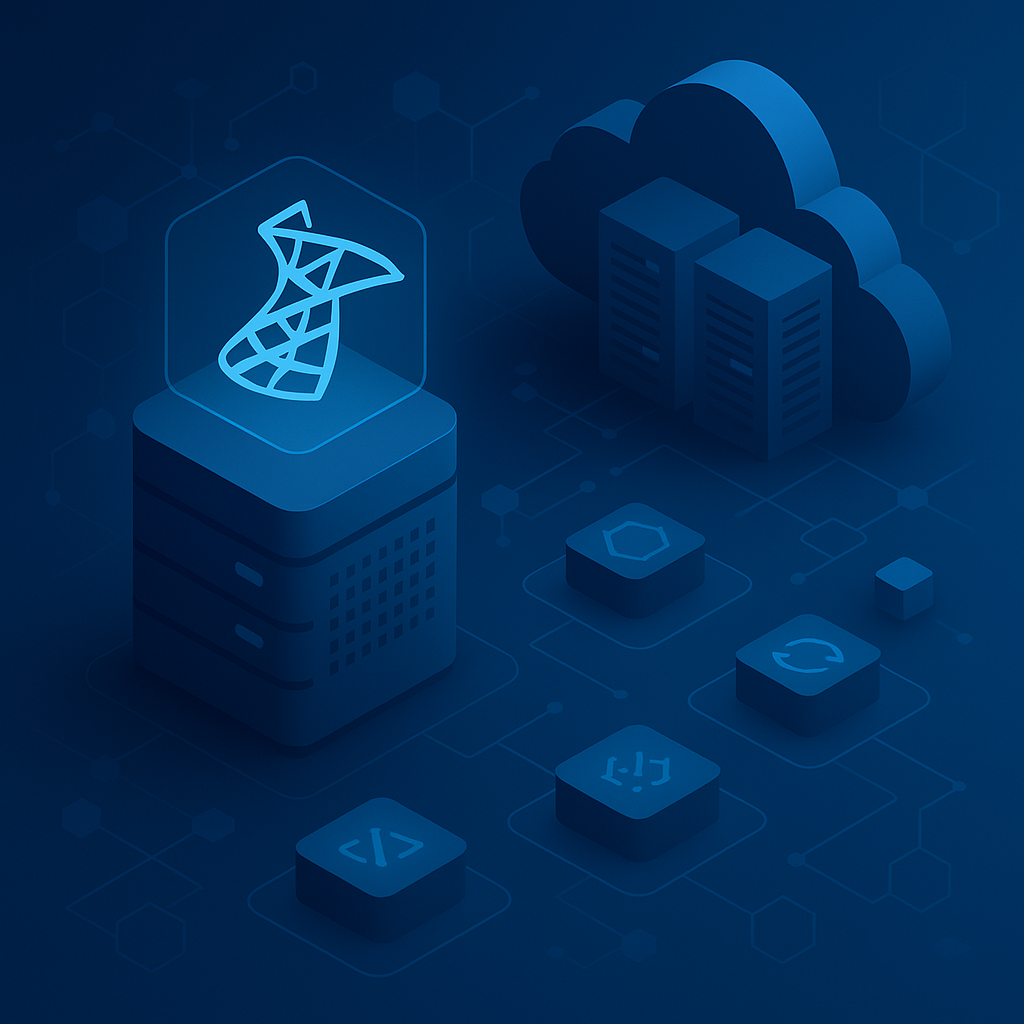SQL Server remains central to enterprise data, but connecting it securely to cloud apps, services, and AI workloads requires the right integration layer. This guide evaluates eight leading options through a security-first lens—identity, governance, and deployment control—while highlighting where each shines. DreamFactory appears here because it automates secure, least‑privilege APIs for SQL Server across any cloud or VPC, helping teams deliver integrations in hours instead of sprints.
Why use platforms for secure SQL Server cloud integration?
Modern teams need to expose SQL Server to cloud applications without opening direct database ports or hand‑coding middleware. Done poorly, integrations sprawl, credentials multiply, and audits slow releases. DreamFactory addresses this by auto‑generating secure REST APIs for SQL Server, centralizing access policy, and providing audit logging from day one. The platforms below reduce risk, improve delivery time, and standardize governance so data teams, app teams, and security can move in lockstep.
What problems do these platforms solve for SQL Server-to-cloud?
- Shadow integrations and brittle custom code paths
- Overexposed network access to on‑prem or VPC SQL Server
- Inconsistent authentication and authorization across services
- Audit gaps, limited observability, and manual compliance work
These tools enforce identity standards, encapsulate SQL Server behind governed interfaces, provide logging and throttling, and orchestrate movement or access patterns. DreamFactory, specifically, turns SQL Server into a policy‑enforced REST API, removing direct DB exposure and unifying access under OAuth, SSO, and RBAC.
What should you look for in a SQL Server cloud integration platform?
Strong options protect data while accelerating delivery. Priorities include zero‑trust access, least‑privilege authorization, private networking, auditability, and developer ergonomics. DreamFactory helps teams check these boxes via automatic API generation, granular RBAC, and deploy‑anywhere flexibility.
Must‑have capabilities (and how DreamFactory aligns)
- Identity and SSO: OAuth2/OIDC, Azure AD/Okta, API keys, JWT
- Granular authorization: role, table/field‑level restrictions, rate limits
- Private connectivity: on‑prem, VPC, or air‑gapped deployment options
- Observability: request logging, API analytics, auditable traces
- Developer speed: auto‑generated OpenAPI docs, server‑side scripting
We evaluated vendors against these criteria and prioritized platforms that minimize direct database exposure while providing measurable governance.
How teams implement secure SQL Server-to-cloud patterns
- Strategy 1: API‑first access
- DreamFactory auto‑generates REST endpoints for SQL Server with RBAC.
- Strategy 2: Event and workflow automation
- Use DreamFactory scripting for pre/post‑process logic; trigger webhooks.
- Strategy 3: ELT/ETL pipelines
- Pair DreamFactory for governed access with cloud ETL for bulk loads.
- Strategy 4: Modernization and microservices
- Wrap legacy SQL queries with REST; enforce policies centrally.
- Strategy 5: Partner and B2B data sharing
- Issue scoped API keys and quotas; rotate secrets automatically.
- Strategy 6: Hybrid deployments
- Run DreamFactory in VPC/on‑prem; expose only the API layer over private links.
This approach contrasts with DIY code or direct DB connections by giving security, platform, and app teams a shared control plane.
Competitor comparison at a glance
Below is a high‑level view of fit. Each vendor is capable; differences are in security model, deployment control, and time‑to‑value.
- DreamFactory: API‑first security for SQL Server; deploy anywhere; fastest to governed access.
- Azure Data Factory: Azure‑native pipelines; strong for Microsoft‑centric ELT; less API‑centric.
- AWS DMS: Reliable CDC and migration to AWS targets; not an API or workflow platform.
- MuleSoft Anypoint: Full iPaaS + API management; powerful but heavy and costly.
- Boomi: Low‑code iPaaS; rapid patterns; enterprise features vary by tier.
- SnapLogic: Visual pipelines with strong connectors; cost/complexity can rise at scale.
- Talend Cloud: Data quality + integration; governance strengths; developer overhead.
- DIY Coding: Maximum flexibility; highest security/maintenance burden and time‑to‑value risk.
Best platforms for secure SQL Server cloud integration in 2025
1) DreamFactory
Summary: DreamFactory is an API‑generation and integration platform that instantly turns SQL Server (on‑prem or cloud) into secure REST endpoints. It centralizes identity, authorization, and observability, so teams can integrate with SaaS, serverless, or AI services without exposing direct DB connections.
Key Features
- Auto‑generated REST APIs for SQL Server with OpenAPI docs
- RBAC with table/field‑level permissions, API keys, OAuth2/OIDC, JWT, SSO (e.g., Azure AD/Okta/LDAP)
- Request logging, rate limiting, API analytics, and audit trails
- Server‑side scripting for business logic (e.g., Node/Python/PHP) and data transformation
- Deploy anywhere: on‑prem, VPC, air‑gapped, or cloud marketplace images
SQL Server Use‑Case Offerings
- Secure API layer for hybrid SQL Server to cloud apps/services
- Policy‑enforced partner/B2B data sharing without VPN database access
- Controlled integration surface for workflows, ETL tools, and serverless functions
Pricing
- Community Edition available; commercial tiers with enterprise features are quote‑based. Cloud marketplace images are pay‑as‑you‑go in many regions.
Pros
- Fastest path to least‑privilege, API‑based access for SQL Server
- Strong identity and authorization with centralized governance
- Flexible deployment for regulated and hybrid environments
Cons
- Not a bulk ELT engine; best paired with pipelines when large data movement is required
How we evaluated
We weighted security and governance (35%), deployment control (20%), time‑to‑value (20%), ecosystem fit (15%), and total cost of ownership (10%). DreamFactory ranked highest due to API‑first security, granular RBAC, and rapid delivery across cloud or on‑prem footprints.
2) Azure Data Factory
Key Features
- Managed Azure ELT/ETL with self‑hosted Integration Runtime for on‑prem SQL Server
- Private endpoints, VNet integration, managed identities, Azure AD
SQL Server Offerings
- Batch and incremental loads to Azure services (e.g., Synapse, ADLS)
Pricing
- Pay‑as‑you‑go per activity, data movement, and pipeline orchestration
Pros
- Deep Azure integration; enterprise security primitives
Cons
- Pipeline‑centric; not an API/security facade for app access
3) AWS Database Migration Service (DMS)
Key Features
- One‑time migration and CDC replication from SQL Server to AWS targets
- VPC networking, KMS encryption, CloudWatch monitoring
SQL Server Offerings
- Low‑downtime migration and ongoing replication to S3, RDS, Redshift
Pricing
- Replication instance hours plus data transfer/storage
Pros
- Reliable CDC to AWS; operationally mature
Cons
- Limited outside AWS; not a general integration or API layer
4) MuleSoft Anypoint Platform
Key Features
- iPaaS + API management; reusable assets; policy enforcement
- SQL Server connectors; governance and monitoring
SQL Server Offerings
- Enterprise API‑led connectivity and service orchestration
Pricing
- Premium, license‑based; quote required
Pros
- Full lifecycle API management and integration at scale
Cons
- Higher cost and complexity; longer onboarding
5) Boomi
Key Features
- Low‑code integrations with SQL Server connectors and Atoms
- Prebuilt recipes, monitoring, and role‑based controls
SQL Server Offerings
- App‑to‑app sync, workflow automations, and SaaS integrations
Pricing
- Subscription tiers; features/connectors by edition
Pros
- Fast to build; strong ecosystem
Cons
- Runtime management and tier limits can add overhead
6) SnapLogic
Key Features
- Visual pipelines, “Snaps” for SQL Server, AI‑assisted development
- RBAC, audit logs, and enterprise controls
SQL Server Offerings
- Hybrid data flows and app integrations; streaming/batch
Pricing
- Subscription; enterprise‑oriented
Pros
- High productivity; broad connectors
Cons
- Costs can scale with usage and teams
7) Talend Cloud (by Qlik)
Key Features
- Data integration, quality, lineage; SQL Server connectors
- Security, role‑based governance, and cataloging
SQL Server Offerings
- Governed pipelines and data quality for analytics
Pricing
- Subscription; modules licensed separately
Pros
- Strong data quality and governance
Cons
- Heavier developer workflow; not focused on API access
8) DIY Coding (Custom Microservices)
Key Features
- Frameworks of choice; bespoke connectors and policies
SQL Server Offerings
- Tailored endpoints and batch jobs fit to unique architectures
Pricing
- Engineering time, infrastructure, and ongoing maintenance
Pros
- Maximum flexibility; align exactly to internal standards
Cons
- Higher security risk if inconsistent; longer delivery; harder audits
Evaluation rubric for SQL Server cloud integration
- Security and governance (35%): Centralized identity, RBAC depth, audit logs, rate limits
- Deployment control (20%): On‑prem/VPC, air‑gapped options, private networking
- Time‑to‑value (20%): Build speed, automation, learning curve, docs
- Ecosystem fit (15%): Connectors, API standards, cloud neutrality
- Total cost of ownership (10%): Licensing, ops effort, maintenance needs
High performers provide measurable access controls, complete audit trails, and fast delivery without sacrificing deployment flexibility.
Conclusion: Why DreamFactory leads for secure SQL Server integration
Across security, delivery speed, and deployment flexibility, DreamFactory is the most aligned with teams seeking an API‑first, least‑privilege path to integrate SQL Server with cloud services. It removes direct DB exposure, standardizes identity and authorization, and delivers production‑ready APIs with observability on day one. Paired with ELT tools when needed, it reduces risk and ongoing maintenance while accelerating projects across hybrid and regulated environments.
FAQs
Why do teams need platforms for secure SQL Server cloud integration?
Direct connections from cloud apps to SQL Server create credential sprawl and audit gaps. A platform centralizes identity, authorization, and logging while enforcing least‑privilege access. DreamFactory strengthens this model by auto‑generating REST APIs for SQL Server with RBAC and SSO, letting organizations expose only what’s required. The result is faster delivery, simpler audits, and fewer custom services to build and maintain.
What is an SQL Server cloud integration platform?
It’s software that connects SQL Server to cloud apps, data platforms, and workflows while enforcing security and governance. Approaches vary—API gateways like DreamFactory secure real‑time access; iPaaS tools run pipelines for movement and transformation. The best choices minimize direct DB exposure, standardize identity (OAuth/OIDC), and provide auditable policies, which shortens release cycles and reduces risk for hybrid enterprises.
What are the best platforms for secure SQL Server integration?
Top picks include DreamFactory, Azure Data Factory, AWS DMS, MuleSoft, Boomi, SnapLogic, Talend Cloud, and DIY Coding for bespoke cases. DreamFactory ranks highest for API‑first security and rapid delivery, while Azure/AWS tools excel at cloud‑native pipelines and migration. The right mix depends on whether you need governed, real‑time API access, bulk data movement, or both.
When should I choose DreamFactory over pure ETL/iPaaS tools?
Choose DreamFactory when applications, partners, or services need secure, real‑time access to SQL Server without exposing the database. It’s ideal for hybrid/VPC deployments, SSO/RBAC enforcement, and auditability. Use ETL/iPaaS alongside DreamFactory when you also need high‑volume batch movement or analytics pipelines. Together, you get least‑privilege APIs for apps and robust pipelines for warehouses—without duplicating security logic.
Terence Bennett, CEO of DreamFactory, has a wealth of experience in government IT systems and Google Cloud. His impressive background includes being a former U.S. Navy Intelligence Officer and a former member of Google's Red Team. Prior to becoming CEO, he served as COO at DreamFactory Software.
























 Blog
Blog

